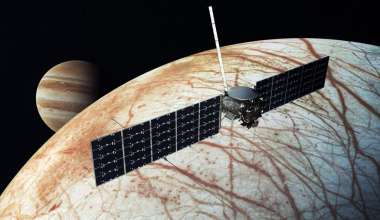NASA’s plans to study changes in upper atmospheric densities, which affects the impact of the Earth’s atmosphere on satellites in low orbit, is getting closer to take-off. Launch services provider Spaceflight Inc. recently announced it has been awarded the contract for integration and launch of NASA’s Low-Latitude Ionosphere/Thermosphere Enhancements in Density (LLITED) mission, which features two 1.5U spacecrafts designed, built and operated by The Aerospace Corporation.
The end result of a $2.52 million grant awarded to Aerospace by NASA’s Heliophysics Science Division in 2017, the two CubeSats will measure and study two features of the nighttime upper atmosphere: the equatorial temperature and wind anomaly (ETWA) that occurs in the neutral atmosphere, and the equatorial ionization anomaly (EIA) that occurs in the region containing charged particles.
While these features have been observed by other satellites and ground facilities, the altitude region of the ETWA and EIA remains poorly understood in comparison to other regions of the Earth’s upper atmosphere. Furthermore, it is at these altitudes that drag on satellites increases. The mission stands to provide a greater understanding of how the ETWA and EIA form and interact, which can then be used to improve upper atmosphere models.
“Aerospace’s innovative CubeSat mission will measure these two features simultaneously, a major new milestone for on-orbit CubeSat satellite capability,” said. Dr. Rebecca Bishop, principal investigator for LLITED. “By observing this altitude region more closely, scientists will gain a greater understanding of the degree of change in atmosphere density, which in turn affects the amount of drag satellites encounter, as well as reentry rates. Because drag is dependent on atmosphere density, understanding regional changes in density can help predict an object’s reentry time and path.”
The two Aerospace CubeSats will each carry three instruments: GPS radio-occultation sensor provided by Aerospace, an ionization gauge from University of New Hampshire, and a planar ion probe provided by Embry-Riddle Aeronautical University in Florida. Both CubeSats will fly in the same orbit plane at an altitude between 350 and 450 km, but the two CubeSats will be spaced 1/4- to 1/2-orbit apart in order to observe the spatial and temporal changes of the ETWA and EIA.
As part of the LLITED mission, Spaceflight will transport the Aerospace CubeSats to low Earth orbit on its Sherpa-LTC orbital transfer vehicle (OTV) aboard a SpaceX Falcon 9 at the end of the year. The Sherpa-LTC will subsequently make its initial spacecraft deployments and then ignite and maneuver to another orbital destination to deploy both CubeSats.
“Spaceflight’s full-service offering with our portfolio of Sherpa OTVs vehicles greatly increases the scientific opportunities for NASA, universities, and other organizations that require deployments to non-traditional orbital destinations,” said Valerie Skarupa, director of government business development for Spaceflight Inc. “We’ve enjoyed a long relationship with NASA, launching nearly 20 spacecraft for the organization over the years, and are focused on helping them get their spacecraft exactly where they need to be on orbit. This opportunity is especially rewarding as the award recognized Spaceflight’s experience with in-space transportation systems.”
The LLITED team includes scientists and engineers from The Aerospace Corporation, Embry-Riddle Aeronautical University, and University of New Hampshire.
Aerospace has more than 80 specialized laboratories used to test, analyze, and troubleshoot virtually every aspect of rocket and satellite system design, development, construction, deployment, and operation. The success of Aerospace research comes from the diverse and wide-ranging expertise of the laboratories’ technical staff and their ability to stay abreast of new technological advancements and program support issues associated with rapidly evolving space systems.









